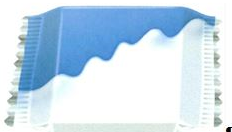Is this the right angle?
Is this the best filter?
Do I have the legal right to post this content?
While the first two questions may be at the forefront of the mind of social media users, the third is arguably as important as the pressure to push content to followers mounts in a saturated market. It is all too easy to download, screen-shot or take a photo of an image and share it across many platforms, however, taking a laissez-faire attitude to copyright ownership can land social media users in hot water.
Not only is uploading and sharing content protected by copyright a breach of the terms of use of most social media platforms (and could lead to a user’s accounts being suspended or terminated in some cases) but it may also lead to copyright litigation, as Khloe Kardashian recently discovered.
Last week, Xposure Photos UK LTD, an “international celebrity photo agency”, filed proceedings against Ms Kardashian in the Central District Court of California alleging that she had infringed its copyright in an image that was posted to her Instagram® account.[1] The image in question had originally been licensed to The Daily Mail and contained a copyright notice “© XPOSUREPHOTOS.COM”. The version of the image that appeared on Ms Kardashian’s account did not contain this notice nor any acknowledgement of Xposure Photos. The unauthorised removal of the copyright notice attracts 17 US Code § 1202 -1203 which provide the basis for a civil action for such conduct. In addition to seeking an injunction to prevent Ms Kardashian from using the image, Xposure Photos is also seeking US$25,000 in statutory damages as well as any profits resulting from the infringement.
While this is arguably small change for Ms Kardashian (who allegedly earns up to US$250,000 for a sponsored post on her social media sites), once legal costs and any time invested in litigation or negotiating a settlement is considered, it seems a hefty price to pay for failing to obtain an appropriate licence from the copyright owner. It is a timely reminder to social media users to ensure that they have the appropriate rights to the content they intend to use.
- Xposure Photos UK Ltd v Khloe Kardashian et al, 2:17-CV-3088 (C.D. Cal).
By: Jaimie Wolbers

